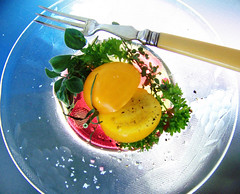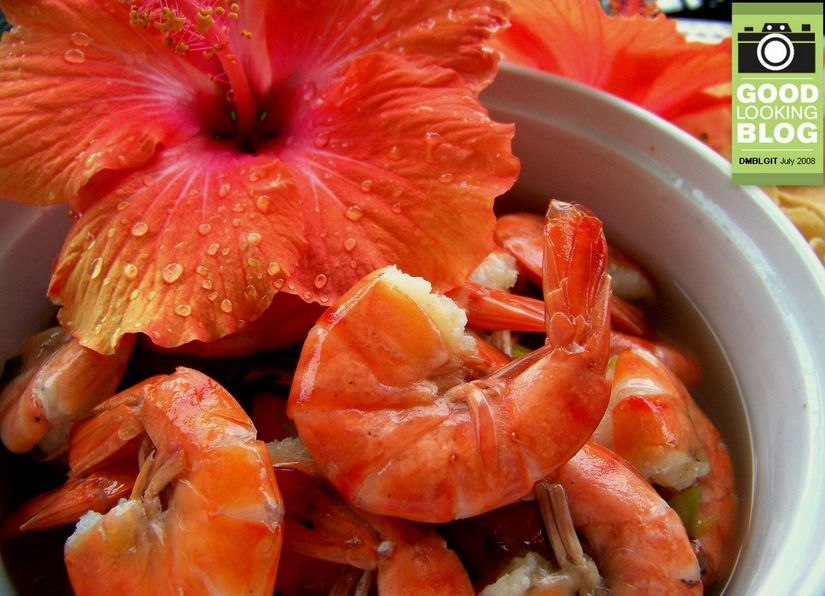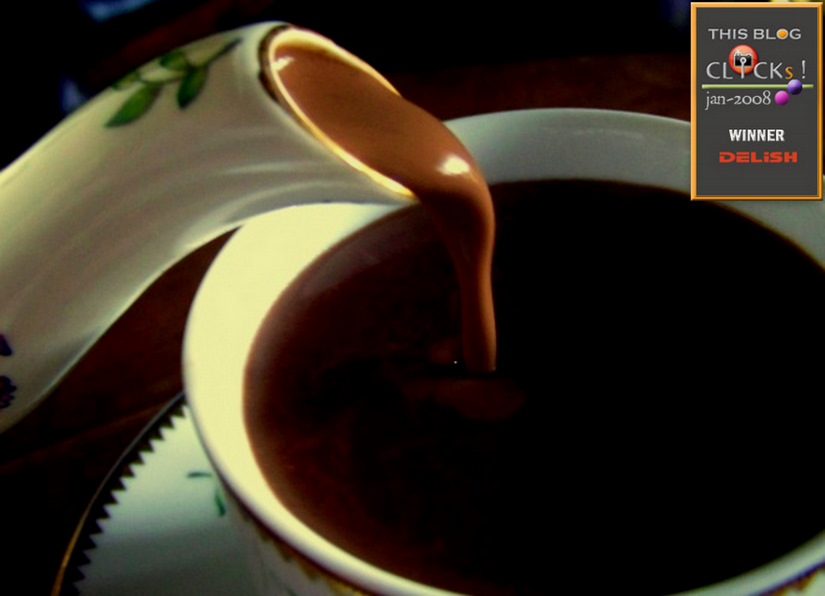Une boîte de lait condensé sucré Eagle Brand, 2 tasses de pépites de chocolat mi-amer, 1 c. à s. d'extrait d'amande pur, 1 tasse de noix émiettées. Ou, pour la recette sans sucre, cliquer ici.
A can of Eagle Brand condensed milk, 2 cups of semi-sweet chocolate chips, 1 tablespoon of pure almond extract, 1 cup of chopped nuts. Or, for the sugar-free recipe, click here.
Un peu d'histoire. Nous, les Américains, cultivons le chocolat depuis au moins 3000 ans ce qui nous donne donc un peu d'expérience dans la matière. L'arbre qui produit les graines de cacao (cacau car cacao est une corruption du nom que lui donnaient les Mayas) est indigène au Nord-Ouest de l'Amérique du Sud, le Vénézuela actuel. Ce furent les habitants du Vénézuela qui enseignèrent aux Mayas à consommer le chocolat, puis les Aztèques l'apprirent des Mayas et enfin, les Européens des Aztèques. Puisque les Aztèques le nommaient Xocoatl, il fut connu en Europe sous le nom de chocolat.
A bit of history. We Americans have been cultivating chocolate for at least 3000 years. We have a bit of knowledge on the subject. The tree that produces cacao beans (cacau since the word cocoa is a corruption of the name the Mayans used) is indigenous to the Northwestern region of South America, present day Venezuela. The inhabitants of this region are the ones who taught the Mayans to use cacau, then the Aztecs learned from the Mayans, and finally, the Europeans from the Atztecs. Since the Aztecs called cacau Xocoatl, the name chocolate was used in Europe.
Ce qui retint l'attention des Européens, c'est son usage comme boisson. Initialement, cette boisson était épicée par les Américains soit au maïs, au chile ou à la vanille et c'était une boisson énergisante. Les Européens, fort peu habitués au caractère fortement amer et épicé y ajoutèrent du poivre noir, de la cannelle, de la vanille et, bien sûr, du sucre de cane. Ce fut Van Houten qui inventa la méthode pour extraire le gras du chocolat (jusqu'à 98%!) et en faire une poudre. Le chocolat au lait n'est pas une invention américaine, mais hollandaise car, pour rajouter un peu de gras à la poudre, on le mélangeait au lait. Lorsque je lis des commentaires désagréables sur le «chocolat américain», combien il est sucré et combien il fait appel au lait, je souris intérieurement de l'ironie... l'ignorance teintée d'arrogance de ces personnes les pousse à qualifier la méthode hollandaise (européenne), et non pas la méthode américaine, comme étant le comble du mauvais goût.
What impressed Europeans was its use as a beverage. Initially, this beverage was spiced by the Americans with maize, or chilies or vanilla and it was an energizing drink. Europeans, a bit put off by the highly bitter and spicy flavour added pepper, cinnamon, vanilla and, of course, cane sugar. Van Houten invented the method to extract the fat from chocolate (up to 98%!) to make a powder. Milk chocolate is not an American invention, but a Dutch method since, to return some fat to the powdered chocolate, milk was added. When I read unpleasant comments on «American» chocolate, how it is sweet and how it is milk-based, I have to smile at the irony... the ignorance of the people who make these arrogant comments incites them to qualify the Dutch (European) method, which is not the American method, of being the height of bad taste.
Inutile de vous dire que je privilégie le cacao le plus pur possible. J'aime bien celui qui contient au-delà de 90% de chocolat et, heureusement, il est maintenant possible d'en trouver dans le commerce. J'aime sa saveur hautement épicée car c'est là son usage premier, une épice.
Need I say that I love the purest chocolate I can find. I like to use chocolate with a 90% content and, happily, I can now find some. I love its highly spicy flavour, for after all that was its original use, a spice.
Une recette, un peu d'histoire pour nourrir notre esprit, un produit délicieusement énergisant... Enjoy!
A recipe, a bit of history to nourrish our minds, a deliciously energizing product... Enjoy!
A bit of history. We Americans have been cultivating chocolate for at least 3000 years. We have a bit of knowledge on the subject. The tree that produces cacao beans (cacau since the word cocoa is a corruption of the name the Mayans used) is indigenous to the Northwestern region of South America, present day Venezuela. The inhabitants of this region are the ones who taught the Mayans to use cacau, then the Aztecs learned from the Mayans, and finally, the Europeans from the Atztecs. Since the Aztecs called cacau Xocoatl, the name chocolate was used in Europe.
Ce qui retint l'attention des Européens, c'est son usage comme boisson. Initialement, cette boisson était épicée par les Américains soit au maïs, au chile ou à la vanille et c'était une boisson énergisante. Les Européens, fort peu habitués au caractère fortement amer et épicé y ajoutèrent du poivre noir, de la cannelle, de la vanille et, bien sûr, du sucre de cane. Ce fut Van Houten qui inventa la méthode pour extraire le gras du chocolat (jusqu'à 98%!) et en faire une poudre. Le chocolat au lait n'est pas une invention américaine, mais hollandaise car, pour rajouter un peu de gras à la poudre, on le mélangeait au lait. Lorsque je lis des commentaires désagréables sur le «chocolat américain», combien il est sucré et combien il fait appel au lait, je souris intérieurement de l'ironie... l'ignorance teintée d'arrogance de ces personnes les pousse à qualifier la méthode hollandaise (européenne), et non pas la méthode américaine, comme étant le comble du mauvais goût.
What impressed Europeans was its use as a beverage. Initially, this beverage was spiced by the Americans with maize, or chilies or vanilla and it was an energizing drink. Europeans, a bit put off by the highly bitter and spicy flavour added pepper, cinnamon, vanilla and, of course, cane sugar. Van Houten invented the method to extract the fat from chocolate (up to 98%!) to make a powder. Milk chocolate is not an American invention, but a Dutch method since, to return some fat to the powdered chocolate, milk was added. When I read unpleasant comments on «American» chocolate, how it is sweet and how it is milk-based, I have to smile at the irony... the ignorance of the people who make these arrogant comments incites them to qualify the Dutch (European) method, which is not the American method, of being the height of bad taste.
Inutile de vous dire que je privilégie le cacao le plus pur possible. J'aime bien celui qui contient au-delà de 90% de chocolat et, heureusement, il est maintenant possible d'en trouver dans le commerce. J'aime sa saveur hautement épicée car c'est là son usage premier, une épice.
Need I say that I love the purest chocolate I can find. I like to use chocolate with a 90% content and, happily, I can now find some. I love its highly spicy flavour, for after all that was its original use, a spice.
Une recette, un peu d'histoire pour nourrir notre esprit, un produit délicieusement énergisant... Enjoy!
A recipe, a bit of history to nourrish our minds, a deliciously energizing product... Enjoy!











9 commentaires:
Du fudge, c'est le début des festivités... Et l'idée de la bouchée ou croquée est amusante!
Bon week-end!
Umm fudge. The great thing about the holidays is that all dietary constraints are thrown out the window!
On voit la gourmande
C'est difficile de résister
UNE FRIANDISE À LAQUELLE IL EST DIFFICILE DE RÉSISTER!
BISES ET BON WEEKEND,
ROSA
J'aime que tu soulignes que le chocolat est originire du Nouveau-Monde.
Les filles en bleu, c'est moi, tarzile.
Il fallait que la goûteuse goûte, Lola ;-P
Actually, Peter, this batch was for my contacts at my customer's ;-P But I had to do some quality control.
Oui, Renaissance, mais moi j'utilise la version sans sucre.
Ah, Rosa, cacau... y'a quelquechose dans le chocolat qui fait qu'on en redemande!
C'est joli comme nom ça, Tarzile! Bravo pour Grosse Journée... les biscuits sont très gourmands :)
J'adore la trace des dents...
Tes recettes de fudge me font toujours autant envie.
Publier un commentaire